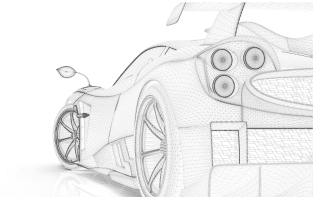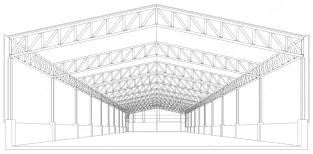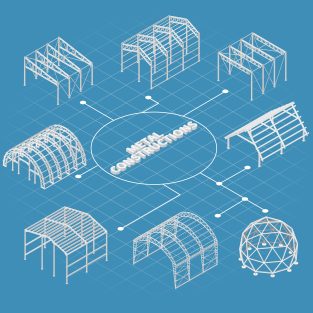Drafting services play a crucial role in the innovation and progress of energy infrastructure. The energy sector is constantly evolving, with a growing emphasis on sustainability, efficiency, and the integration of renewable energy sources. Here’s how drafting services contribute to the advancements in energy infrastructure:
Energy Infrastructure
- Design Precision:
- Drafting services provide precise and detailed technical drawings and plans for energy infrastructure projects. This precision is essential for the efficient design and construction of power plants, transmission lines, and other energy facilities.
- Integration of Renewable Energy:
- As the world transitions towards cleaner and more sustainable energy sources, drafting services are instrumental in integrating renewable energy technologies. This includes drafting plans for solar farms, wind turbine layouts, and other green energy projects.
- 3D Modeling and Visualization:
- Advanced drafting services utilize 3D modeling and visualization tools to create lifelike representations of energy infrastructure projects. This aids in better understanding and communication among stakeholders, leading to more informed decision-making.
- Efficient Space Utilization:
- Drafting services help optimize the use of available space, whether it’s for a new power plant or the layout of a solar array. Efficient space utilization is critical for maximizing energy output and minimizing environmental impact.
- Safety and Compliance:
- Drafting services ensure that energy infrastructure projects adhere to safety regulations and industry standards. Accurate drafting helps identify potential hazards and allows for the incorporation of safety features into the design.
- Smart Grids and Digital Infrastructure:
- With the advent of smart grids and digital infrastructure, drafting services are adapting to incorporate the latest technologies. This includes drafting plans for the installation of sensors, communication networks, and other components that make energy systems more intelligent and responsive.
- Cost Optimization:
- Detailed drafting allows for better cost estimation and management throughout the project lifecycle. This is crucial in the energy sector, where large-scale projects require careful budgeting to ensure financial viability.
- Adaptability to Emerging Technologies:
- Drafting services need to stay abreast of emerging technologies in the energy sector, such as energy storage systems and advanced grid management. This adaptability ensures that infrastructure designs can accommodate future technological advancements.
- Environmental Considerations:
- As environmental concerns become more pronounced, drafting services play a key role in incorporating sustainable practices into energy infrastructure projects. This includes designing facilities that minimize environmental impact and adhere to eco-friendly standards.
- Collaboration and Communication:
- Drafting services facilitate collaboration among various stakeholders, including engineers, architects, environmental experts, and policymakers. Clear and comprehensive drawings enhance communication and understanding among team members, fostering a collaborative approach to energy infrastructure development.
Energy and Utilities Drafting Services
Energy and utilities drafting services involve creating technical drawings, plans, and diagrams related to the design, construction, and maintenance of energy and utility infrastructure. These services play a crucial role in the planning and execution of projects in the energy and utilities sector, which includes areas such as power generation, transmission and distribution, renewable energy, water supply, and wastewater treatment. Here are some key aspects of energy and utilities drafting services:
- Design and Planning:
- Drafting services are involved in creating detailed design plans for energy and utility projects. This includes drawings of power plants, substations, transmission lines, pipelines, and other infrastructure components.
- Drafters work closely with engineers and project managers to translate conceptual designs into detailed technical drawings that can be used for construction and implementation.
- CAD (Computer-Aided Design):
- Computer-Aided Design (CAD) software is commonly used in energy and utilities drafting services. CAD tools allow drafters to create precise and detailed drawings, including 2D plans and 3D models.
- CAD software also facilitates the incorporation of changes and updates to designs, ensuring that the documentation remains accurate and up-to-date throughout the project lifecycle.
- Regulatory Compliance:
- Energy and utility projects often need to adhere to strict regulatory standards and guidelines. Drafting services ensure that the design documentation complies with all relevant regulations and industry standards.
- Construction Documentation:
- Drafters create construction documentation, including detailed drawings and specifications that contractors use during the construction phase. This helps ensure that the project is built according to the approved design.
- As-Built Drawings:
- As the project progresses, drafters may be involved in creating as-built drawings, which document the actual dimensions and locations of infrastructure components as they are built. These drawings are essential for future maintenance and upgrades.
- GIS (Geographic Information System) Mapping:
- Some energy and utility drafting services involve GIS mapping to create spatial representations of infrastructure. GIS is valuable for managing and analyzing geospatial data related to utility networks.
- Renewable Energy Projects:
- Drafting services play a vital role in the planning and design of renewable energy projects, such as solar and wind farms. This includes layout design, equipment placement, and electrical interconnections.
- Subsurface Utility Engineering (SUE):
- In utilities projects, especially those involving excavation or drilling, drafting services may be involved in Subsurface Utility Engineering to map and document the location of underground utilities.
Energy and utilities drafting services contribute to the overall success and efficiency of projects by providing accurate and detailed documentation that supports the various stages of a project, from initial design to construction and maintenance. These services help ensure that infrastructure is designed, built, and operated safely and effectively.
What is the meaning of energy and utilities?
Energy and utilities refer to essential services that power our daily lives and enable various functions within society:
Energy: Energy is the capacity to do work. It exists in various forms such as kinetic energy (energy of motion), potential energy (energy stored in an object due to its position), thermal energy (heat energy), chemical energy (energy stored in chemical bonds), electrical energy, and more. In the context of utilities, energy typically refers to electricity, natural gas, and sometimes other sources like oil or renewable energy sources such as solar or wind power.
Utilities: Utilities are services that are necessary for daily life, including energy provision (electricity, gas, etc.), water supply, sewage treatment, and waste management. Utilities are often provided by public or private entities and are essential for the functioning of households, businesses, and industries. Utilities infrastructure includes power plants, electrical grids, water treatment plants, pipelines, and distribution networks.
What are the key activities of the energy environment and utilities industry?
The energy, environment, and utilities industry encompasses a wide range of activities related to the generation, transmission, distribution, and consumption of energy, as well as efforts to protect the environment and manage resources sustainably. Key activities within this industry include:
Energy Generation: This involves producing electricity and other forms of energy through various means such as fossil fuels (coal, oil, natural gas), renewable sources (solar, wind, hydroelectric, geothermal), and nuclear power.
Energy Transmission and Distribution: Once energy is generated, it needs to be transported from power plants to end-users through transmission lines and distributed via local grids to homes, businesses, and industries.
Energy Retailing and Sales: Companies in this sector sell energy to end-users, including residential, commercial, and industrial customers. They often offer services like billing, customer support, and energy efficiency programs.
Utilities Infrastructure Development and Maintenance: This involves building, upgrading, and maintaining the infrastructure necessary for energy transmission and distribution, such as power lines, substations, transformers, and meters.
Environmental Protection and Sustainability: Companies in this sector focus on mitigating environmental impacts associated with energy production and consumption. This includes efforts to reduce carbon emissions, promote renewable energy adoption, implement energy efficiency measures, and comply with environmental regulations.
Resource Management and Conservation: Activities in this area involve managing natural resources such as water, land, and minerals in a sustainable manner. This includes efforts to conserve resources, minimize waste generation, and protect ecosystems.
Research and Development (R&D): R&D efforts in the energy, environment, and utilities industry focus on developing innovative technologies and solutions to improve energy efficiency, reduce environmental impacts, and enhance the sustainability of energy systems.
Regulatory Compliance and Policy Advocacy: Companies in this sector must comply with various regulations and policies related to energy production, environmental protection, and resource management. They may also engage in advocacy efforts to shape government policies and regulations.
Emergency Response and Disaster Recovery: Utilities are responsible for responding to emergencies such as power outages, natural disasters, and environmental incidents. This involves restoring services quickly and safely, as well as implementing measures to prevent future disruptions.









